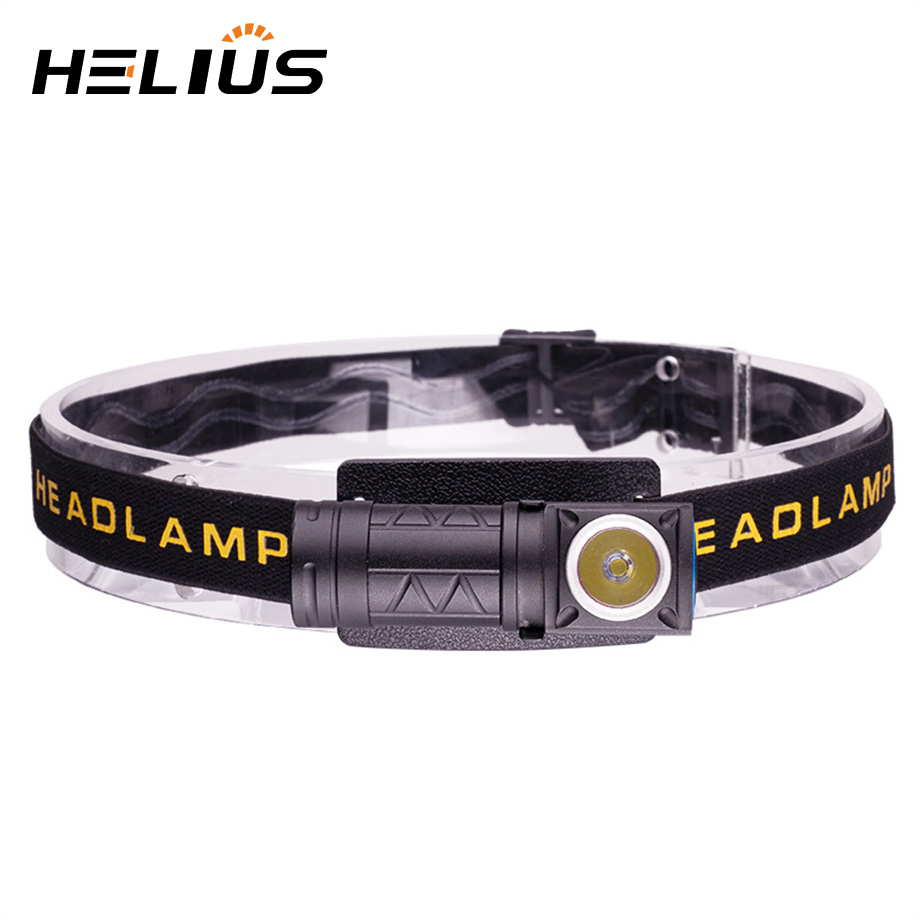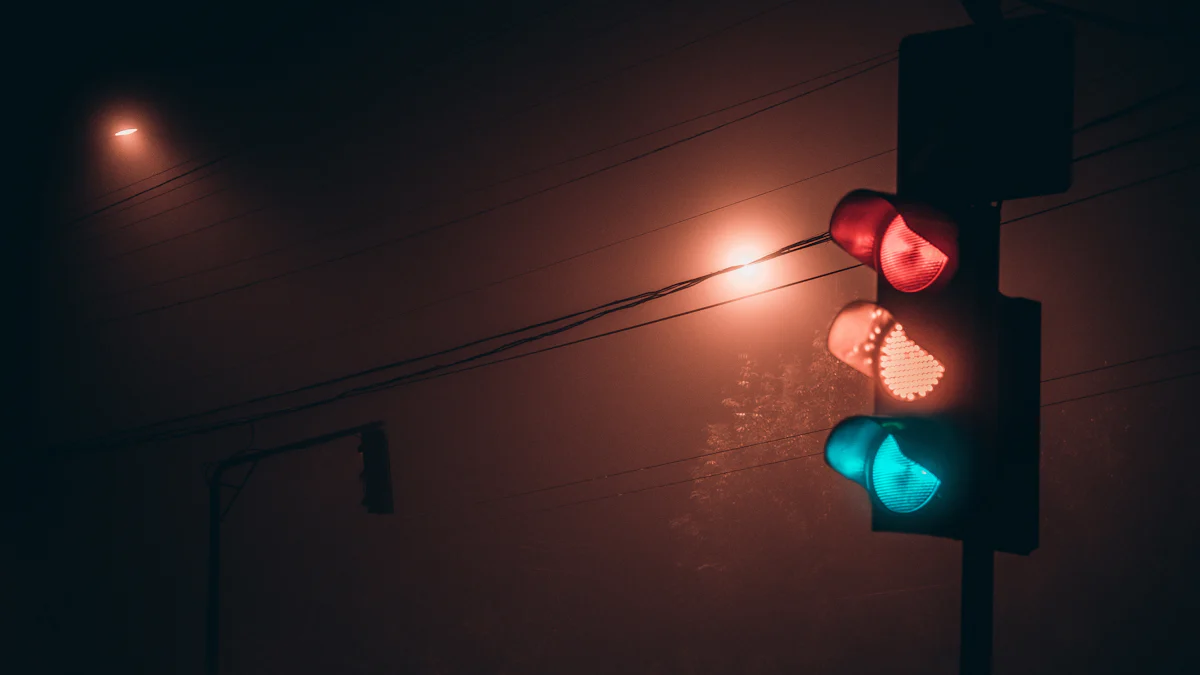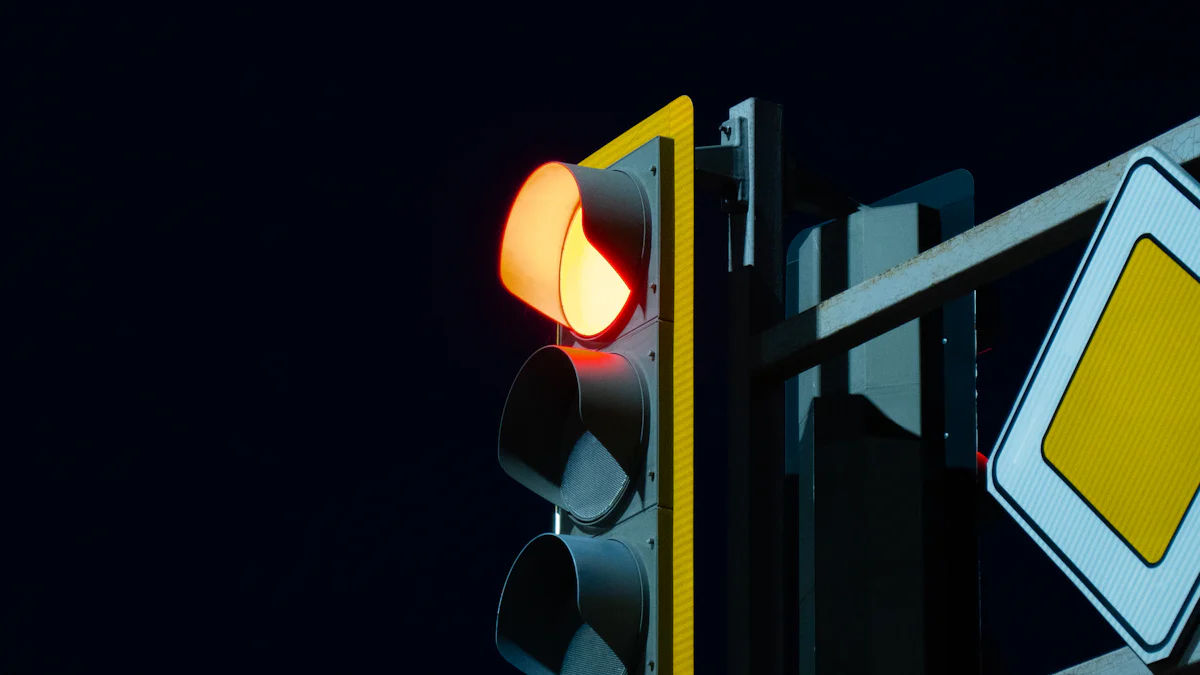How Flashlights Can Be Used for Signaling in Outdoor Emergency Scenarios

A flashlight is one of the most important tools you can carry during outdoor adventures, especially when considering how flashlights can be used for signaling in outdoor emergency scenarios. It provides a dependable way to signal for help when you face distress. You can use it to send an SOS signal, which is a universal call for assistance. In emergencies, choosing open spaces like hilltops or clearings helps your signal reach farther. Reflective surfaces amplify your light in dense areas, making it easier for rescuers to spot you. A reliable flashlight ensures effective communication, even in challenging weather. Adjusting your technique, such as lowering signals in fog, improves visibility and increases your chances of being found.
Key Takeaways
A flashlight is important for emergencies. Use it to send an SOS signal, a worldwide help message.
Pick a flashlight with strong brightness for better sight. A bright beam can reach rescuers even in bad weather.
Learn how to use strobe and SOS modes on your flashlight. These settings help get attention and show you need help.
Always bring extra batteries and another flashlight. This keeps you ready if your main flashlight stops working.
Take care of your flashlight often. Test it and keep it easy to find in your emergency kit.
Key Features of Flashlights for Emergency Signaling

Light Intensity and Beam Distance
The brightness and beam distance of a flashlight play a critical role in emergency signaling. A powerful beam ensures your signal reaches rescuers even in challenging conditions. Flashlights with higher lumens can illuminate greater distances, making them ideal for outdoor emergencies. Here's a quick comparison of beam distances based on lumens:
Lumens | Distance | Best For |
|---|---|---|
3000–7000 | Up to 500 meters | Extreme weather conditions, mountaineering, emergency rescue |
7000–15000 | Up to 700 meters | Lighting large areas, emergency rescue, mountaineering |
When choosing a flashlight, consider the terrain and weather. A long-range beam is essential for signaling across valleys or dense forests, while a wide beam works better for open spaces.
Strobe and SOS Modes
Modern flashlights often include specialized modes designed for emergency signaling. These features enhance your ability to communicate distress effectively:
Strobe Mode: Emits rapid light pulses to grab attention or disorient potential threats.
SOS Mode: Flashes the universal SOS signal (three short, three long, three short) to indicate distress.
These modes are invaluable during emergencies. For example, SOS mode ensures rescuers recognize your call for help, even from a distance. Practicing how to activate these modes before heading outdoors can save precious time during critical situations.
Durability and Weather Resistance
A durable flashlight ensures reliability in harsh outdoor conditions. High-quality materials like aluminum and stainless steel provide strength and longevity. Many tactical flashlights are waterproof and shockproof, making them suitable for wet or rugged environments. Key features that enhance durability include:
Resistance to extreme temperatures for consistent performance.
Ergonomic designs with textured grips to prevent slippage.
Shockproof construction to withstand accidental drops.
When preparing for outdoor adventures, prioritize flashlights built to endure unpredictable weather. A reliable flashlight ensures you stay prepared for any emergency signaling scenario.
Selecting the Best Flashlight for Outdoor Emergencies
Brightness and Battery Life
When choosing a flashlight for emergencies, brightness and battery life are two critical factors. A flashlight with high lumens ensures visibility over long distances, which is essential in outdoor scenarios. For example, models like the GearLight S1000 generate up to 800 lumens, providing ample brightness for signaling.
Battery life determines how long your flashlight will last during emergencies. Rechargeable flashlights, such as the Fenix PD25R, offer extended runtimes and eliminate the need for frequent battery replacements. LED flashlights are particularly energy-efficient, consuming less power while delivering bright illumination. This makes them a reliable choice for prolonged outdoor use.
Tip: Always carry spare batteries or a power bank to ensure your flashlight remains functional throughout your trip.
Compact and Lightweight Designs
A compact and lightweight flashlight is easier to carry and store in your emergency kit. Models like the GearLight S1000 weigh only 5 ounces, making them ideal for hiking or camping. Smaller flashlights fit comfortably in your pocket or backpack without adding unnecessary weight.
Despite their size, these flashlights often pack powerful features, including multiple lighting modes. Look for designs that balance portability with functionality. A lightweight flashlight ensures you can move freely while keeping your signaling tool within reach.
Tactical and Multi-functional Flashlights
Tactical flashlights offer unmatched durability and versatility for outdoor emergencies. Constructed from military-grade materials, they withstand drops, impacts, and extreme weather conditions. For example, the Fenix PD40R V3.0 features an IP68 rating, ensuring water and dust resistance.
These flashlights often include strobe and SOS modes, making them invaluable in emergencies. Their high lumens provide excellent visibility, while their robust build ensures reliability during search-and-rescue missions. Compared to standard flashlights, tactical models offer superior brightness, durability, and functionality.
Feature | Tactical Flashlights | Regular Flashlights |
|---|---|---|
Brightness and Beam | Often exceed 1,000 lumens for long-range | Moderate brightness for shorter-range tasks |
Durability and Build | Made from aircraft-grade aluminum, IPX8 | Generally durable but not as robust |
Functionality and Modes | Multiple modes including strobe and SOS | Basic functionality with few modes |
Note: Tactical flashlights may cost more, but their reliability and features make them a worthwhile investment for outdoor emergencies.
Preparing for Outdoor Emergency Signaling
Packing Essentials: Spare Batteries and Backup Flashlights
Packing the right items alongside your flashlight ensures you stay prepared for emergencies. Always include extra batteries in your emergency kit. These keep your flashlight functional when the primary batteries run out. Backup flashlights are equally important. They act as a safety net in case your main flashlight malfunctions or gets lost.
Other essentials to consider include a whistle. This simple tool complements your flashlight by providing an audible signal that can attract attention over long distances. By packing these items, you enhance your ability to handle unexpected situations effectively.
Regular Maintenance and Accessibility
Maintaining your flashlight regularly ensures it works when you need it most. Check its functionality every 6 to 12 months. Use brand-new batteries and avoid turning the flashlight on unnecessarily to preserve its lifespan. Inspect and clean the battery contacts to prevent corrosion. Lubricate threads and o-rings to maintain watertight integrity, especially if your flashlight is waterproof.
Store your flashlight in a cool, dry place to avoid damage from extreme temperatures or moisture. If you own a high-end flashlight, consider using a protective case to shield it from physical damage. Keep it in an accessible location within your emergency kit so you can grab it quickly during emergencies.
Testing Flashlight Features Before Trips
Testing your flashlight before heading outdoors ensures it performs as expected. Focus on these key features:
Brightness, measured in lumens, to ensure visibility.
Battery life and type to match your trip's duration.
Durability and build quality for rugged conditions.
Multiple lighting modes, such as strobe or SOS.
Size and weight for portability.
User-friendly controls for quick operation.
Beam distance and focus for signaling over long ranges.
By testing these features, you can identify any issues and address them before your trip. This preparation ensures you can rely on your flashlight during emergencies.
Tip: Familiarize yourself with using your flashlight safely to avoid accidental damage or misuse.
Effective Flashlight Signaling Techniques

How to Signal SOS with a Flashlight
The SOS signal is the international distress signal used to communicate emergencies. Learning how to signal SOS with a flashlight can save lives in outdoor scenarios. Follow these steps to send a clear SOS signal for help:
Ensure your flashlight is fully charged or has fresh batteries. Test it to confirm it works properly.
Quickly flash the light three times, each lasting about one second.
Create three long flashes, holding the light on for three seconds each.
Repeat the three short flashes to complete the SOS pattern.
Pause for a few seconds, then repeat the sequence until rescuers notice your signal.
Practicing this technique regularly ensures you can perform it confidently during emergencies. Always keep your flashlight in an accessible spot to avoid delays when signaling.
Using Strobe Mode to Attract Attention
Strobe mode is a powerful feature for high-visibility signaling. It emits rapid, flashing light pulses that grab attention effectively, even in low-light or night conditions. Use strobe mode to alert rescuers or passersby to your location. Aim the light toward open areas or reflective surfaces to amplify its visibility.
Bright, flashing lights are more noticeable than steady beams, especially in wilderness signaling situations. This makes strobe mode an essential tool for outdoor emergencies. Familiarize yourself with activating this mode before heading out. Testing it ensures you can use it quickly when needed.
Enhancing Visibility with Reflective Surfaces and Color Filters
You can enhance your flashlight’s effectiveness by using reflective surfaces and color filters. Reflective surfaces, such as mirrors or metallic objects, amplify your light, making it visible over greater distances. Aim your flashlight at these surfaces to create a broader and brighter signal for help.
Color filters, like red or green, improve visibility in specific conditions. Red filters work well at night, as they reduce glare and preserve your night vision. Green filters are effective for signaling in dense forests. Combining these tools with your flashlight ensures high-visibility signaling, even in challenging environments.
Tip: Choose open areas for signaling to maximize visibility and avoid obstructions. Practicing these techniques ensures you’re prepared for any emergency.
Alternative Tools for Emergency Signaling
Smartphone Flashlights: Pros and Cons
Smartphone flashlights serve as convenient signaling tools during emergencies. Most people carry smartphones, making this option easily accessible. You can use the flashlight to send an SOS signal by flashing three short bursts, three long bursts, and three short bursts again. This universal distress signal can alert rescuers to your location.
However, smartphone flashlights have limitations. They rely on battery power, which drains quickly when used for extended periods. If your phone is already low on charge, the flashlight may not last long enough to be effective. Smartphones are also less durable than dedicated flashlights. They may fail in extreme weather or after accidental drops. While smartphone flashlights are helpful in emergencies, they should not replace a reliable flashlight in your emergency kit.
Glow Sticks and Their Role in Emergency Signaling
Glow sticks are another effective option for emergency signaling. These lightweight tools are portable and easy to use. They provide reliable illumination when other light sources fail. You can wave them to attract attention or mark trails in low-light conditions. Glow sticks are especially useful in situations where you need to signal for help without relying on batteries or electricity.
Glow sticks are visible from a distance, making them ideal for outdoor emergencies.
They work well in disaster scenarios, enhancing safety by marking paths or signaling your location.
Their simplicity and reliability make them a valuable addition to your emergency preparedness kit.
While glow sticks cannot match the brightness of flashlights, they complement other signaling tools effectively. Using them alongside a flashlight increases your chances of being noticed during emergencies.
Flashlights are essential tools for emergency preparedness. They provide reliable light when power fails and help you signal for assistance in the dark. Pairing a flashlight with a whistle increases your chances of being noticed. Practicing signaling techniques, like SOS, ensures you can act quickly during emergencies. Adding a flashlight to your emergency kit helps you stay safe and prepared. Understanding how flashlights can be used for signaling in outdoor emergency scenarios ensures you are ready to face unexpected challenges.
FAQ
What is the best flashlight mode for emergency signaling?
The SOS mode is the most effective for emergencies. It flashes the universal distress signal (three short, three long, three short). This pattern is easily recognizable by rescuers. Practice activating this mode before your trip to ensure you can use it quickly when needed.
How far can a flashlight signal be seen?
The visibility of your flashlight depends on its lumens and beam distance. High-powered flashlights with 7,000+ lumens can reach up to 700 meters. Open spaces and clear weather improve visibility, while fog or dense forests may reduce the range.
Can I use a smartphone flashlight in emergencies?
Yes, but it has limitations. Smartphone flashlights drain battery power quickly and lack durability in harsh conditions. They work as a backup but should not replace a dedicated flashlight in your emergency kit. Always carry a reliable flashlight for outdoor adventures.
How do I maintain my flashlight for emergencies?
Check your flashlight every 6-12 months. Replace old batteries, clean battery contacts, and inspect for damage. Store it in a cool, dry place. Keep it accessible in your emergency kit to ensure it’s ready when you need it most.
Are glow sticks better than flashlights for signaling?
Glow sticks are useful but not as bright as flashlights. They work well for marking trails or signaling in low-light conditions. Use them alongside a flashlight for better visibility. Their reliability without batteries makes them a great addition to your emergency kit.
See Also
Diverse Scenarios for Effective Flashlight Utilization
Enhance Outdoor Safety Using Wholesale Mini Pocket Flashlights
Selecting The Ideal Multi-Color Flashlight For Emergencies And Hunting
Choosing The Best Flashlight Or Headlamp For Outdoor Activities
Exploring The Various Applications Of Wholesale Flashlights And Lanterns
